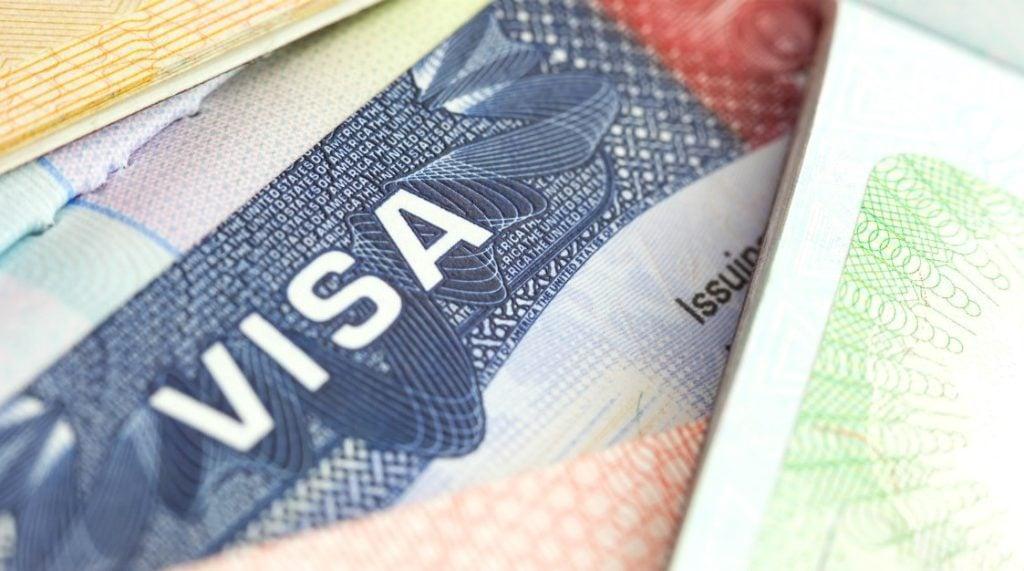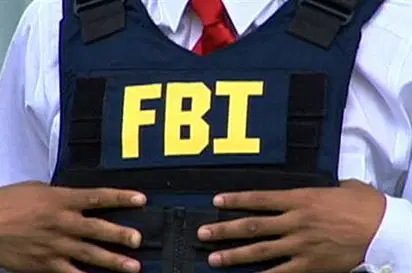Headline
Step-By-Step Guide On How To Tet Russian Work Visa

A Russian work visa allows foreign nationals to legally enter and work in Russia. It is specifically issued to individuals who have secured employment in the country.
This type of visa is initially issued as a single-entry visa and remains valid for up to 90 days. However, it can be extended through the Russian Ministry of Interior. Nationals of Belarus and South Ossetia are exempted from requiring a work visa to be employed in Russia, while individuals from other countries must apply for one.
Reports say Russia needs immigrants to fill the labour shortage. According to Kremlin spokesperson, Dmitry Peskov, in an interview published on Friday, November 22, 2024, Russia’s dwindling workforce has made immigration essential for its development.
Sometimes, travellers may enter Russia visa-free for purposes other than employment. According to Visaguide, here are some step-by-step guide to getting a Russian work visa:
1. Secure a Job
The first step is securing a job in Russia. It is only possible to apply for a work visa with a confirmed job offer from a Russian employer. Begin by researching job opportunities that match your qualifications and skills, and ensure that your potential employer is authorized to hire foreign workers. Once you have a job offer, the employer will guide you through their part of the visa process.
READ ALSO: Why Cameroonian Authorities Detained Five Nigerian Pastors – Sources
2. Passport Validity
You must verify the validity of your passport. It should be valid for at least six months beyond your intended departure date from Russia and have at least two blank pages to accommodate the visa and other entry stamps. If your passport does not meet these requirements, you must renew it before proceeding.
3. Visa Support
An invitation to work in Russia, also known as visa support, is one of the most critical documents in the application process. The Russian Ministry of Interior issues this invitation, which your employer must obtain. Once issued, the invitation will either be sent to you in its original form or electronically, depending on the requirements of the consulate in your country.
4. Visa Application
Completing the Russian work visa application form is another essential step. The form is available on the official website of the Russian Foreign Ministry. You must fill it out carefully, ensuring all the information provided is accurate and consistent with the details on your other documents. Mistakes or inconsistencies can lead to delays or rejection. Once you have completed the form, print it and sign it as required.
5. Gathering Supporting Documents
The next stage involves gathering all the necessary supporting documents. These include the invitation issued by the Ministry of Interior, a letter from your employer detailing your job role and purpose of travel, an HIV test certificate issued within three months of your application date, and, if applicable, proof of health insurance. The health insurance document must clearly state that it covers medical services within Russia, along with repatriation services if required. Ensure that all documents meet the specific criteria set by the Russian authorities, as any discrepancies can negatively impact your application.
READ ALSO: 7 Countries With The Most Prisoners In The World
6. In-Person Submission
Submitting your application in person at a Russian consulate or designated visa processing center is crucial. Check the consulate’s guidelines in your country, as you may need to schedule an appointment. At the appointment, you will submit your documents, provide biometric data if requested, and answer any additional questions from the consular officers.
7. Visa Fee
Paying the visa fee is the final step of the application process. The cost of a Russian work visa can range from €30 to €500, depending on factors such as your nationality, the length of your stay, and whether you opt for expedited processing. Payment methods vary by consulate, so confirm whether they accept cash, card, or bank transfers. Keep proof of payment, as required, during the application review.
Once your application is complete, the consulate will process your request. In some cases, you may be invited for an interview. If your visa is approved, it will be issued as a sticker affixed to your passport.
Upon arrival in Russia, you must complete an immigration card. This document is provided at the port of entry and contains two identical parts. Border officials will retain one part, while you must always carry the other part with you. This card will be required when leaving the country.
You will also need to register your visa within seven days of arrival. If you are staying at a hotel, the hotel management will handle the registration process on your behalf using copies of your passport, visa, and immigration card. If you are staying in a private residence, the homeowner must register the visa for you, often for a small fee.
Headline
EU Fines Elon Musk’s X €120m For Violating Digital Content Rules

Elon Musk’s social media platform, X, has been hit with a €120 million ($140 million) fine by European Union tech regulators for violating multiple provisions of the EU’s Digital Services Act (DSA).
This marks the first significant penalty imposed under this landmark legislation.
On Friday, the European Commission announced the fine, citing various violations by X, including misleading platform features and a lack of transparency in research practices.
READ ALSO:Elon Musk Deletes Post Claiming Trump Was ‘In The Epstein Files’
Regulators pointed out that one of the violations involved the misleading design of the blue verification checkmark. This feature is now linked to subscription payments instead of identity validation, which the EU described as “deceptive and potentially harmful.”
The Commission also criticized X for not maintaining transparent advertising records and for restricting researchers’ access to publicly available data on the platform.
This ruling is likely to heighten diplomatic tensions between Brussels and Washington. U.S. officials from the Trump administration had previously condemned Europe’s regulatory approach toward major tech companies, claiming that EU policies unfairly target American firms and restrict free expression.
READ ALSO:Elon Musk Joins ‘Cancel Netflix’ Campaign
However, the European Commission defended its stance, stating that enforcement under the DSA is not influenced by nationality. They emphasized that the legislation is designed to promote online accountability, protect users, and ensure transparency in digital operations—standards that are increasingly becoming global benchmarks.
“The DSA does not discriminate by company origin,” the Commission argued, maintaining that the penalties reflect Europe’s commitment to protecting democratic values and responsible digital governance.
The fine marks a significant test case for the EU’s new regulatory regime and could set precedent for similar action against other platforms not in full compliance with the law.
Headline
Nigerian Ringleader Of Nationwide Bank Fraud, Money Laundering Jailed In US, Says FBI

The Federal Bureau of Investigation (FBI) has announced the sentencing of Nigerian national Oluwaseun Adekoya, the mastermind behind a sprawling bank fraud and money-laundering operation that targeted victims across the United States.
According to investigators, Adekoya, who operated under multiple aliases including “Ace G.,” “BRODA,” “Legendary,” “SANTA,” “SANTANA,” “Sammy LaBanco,” “Sean Maison,” and “Kiing_maison” led a sophisticated criminal network that stole and laundered more than $2 million by impersonating individuals nationwide.
The FBI said the long-running operation, internally code-named Operation Catch Me if You Can, relied on coordinated efforts across numerous law enforcement and banking agencies.
READ ALSO:
FBIAlbany headed the investigation, working with partners across the country to dismantle Adekoya’s organisation and secure justice for affected victims.
As part of the announcement, FBI Albany Special Agent in Charge Craig Tremaroli said, “Mr. Adekoya spent almost two decades of his life creating a massive criminal network that stole from hard-working Americans. This sentence ensures he’ll spend the next two decades of his life in federal prison.
“The FBI is grateful to the numerous law enforcement and banking institution partners who provided the assistance needed to take down Mr. Adekoya and his associates and ensure justice for the victims. We remain deeply committed to using every resource available to investigate and bring to justice any individual or organization focused on defrauding our citizens.”
READ ALSO:
Adekoya has now been sentenced to 20 years in federal prison.
According to the FBI, the case demonstrates its continued commitment to combating financial crimes and protecting Americans from fraud schemes that are growing in scale and sophistication.
Headline
VIDEO: Nigerians In UK Lament Delayed Passport Capturing At ‘Crowded’ Birmingham Centre

Nigerians in the United Kingdom (UK) have cried out to the Nigerian authorities over delays in renewing their international passports, describing the capturing experience as frustrating.
According to a video from the Nigerian Passport Intervention Centre in Birmingham, sighted by Tribune Online, hundreds of people are seen lurking around while waiting for officials to arrive for the exercise.
In the video, a lady narrated how the crowd had gathered since around 4am on Friday after their names had been taken down the previous day with the promise that the capturing would be done the next day.
“They promised they’re going to start at 9am and at 12pm when I was leaving, they’ve not even started attending to people. We heard that the officials were not even at the scene,” she said.
READ ALSO:US Imposes Visa Restrictions On Nigerians Linked To Religious Freedom Violations
Continuing, the video showed the arrival of some of the officials, whom the lady said had asked the crowd to return the next day.
“While I was walking to my taxi, I saw some of the officials. I recognised them from yesterday when he addressed the people saying ‘Go and come back tomorrow’. The one driving that car was the one who was addressing us yesterday,” she added, referring to a vehicle in the viral clip.
The lady further criticised their attitude to the plight of Nigerians at the centre, saying many, including herself, came with babies.
“It’s so shameful that Nigeria will still happen to you even if you’re outside Nigeria. It’s the people, not only the government,” she added.
READ ALSO:Trump Unveils Fast-track Visas For World Cup Ticket Holders
Reacting to the video, another user simply identified as OduduAbasi Umo-Odiong, posted two short clips showing people agitated at the centre.
“People are already getting agitated today. The frustration is rising and the situation is becoming tense,” he captioned.
However, an X user, identified as Williams Ibironke, disagreed with the information in the video, saying the officials work till midnight.
“The information she posted was purposely made as content to miss direct people. those pple are working til midnight everyday, they closed @3am so how can they resume early again. I did mine @12:33am this morning and I still left people there, meaning they may not close until 2am,” he posted.
READ ALSO:Trump Orders Tougher Visa Screening Regime
Other X users reacting to the video called on the Minister of Interior, Olubunmi Tunji-Ojo, to act swiftly on the issue, wondering how the positive reform he introduced is addressing the issue.
“Someone has fingered a working system to their benefit. Just a few weeks ago, you can start and finish your passport renewal process on your mobile phone without leaving your home.
“What happened to that positive change?,” a user asked.
All possible efforts to get Nigerian authorities’ reaction to the issue proved abortive as of the time of filing this report as neither the Minister nor the Interior Ministry responded to messages sent to them.
Watch video here
Source: Nigerian Tribune

 Sports5 days ago
Sports5 days agoDavido Reacts As Gov Adeleke Dumps PDP

 Entertainment5 days ago
Entertainment5 days ago2face, Natasha Fight Dirty On Instagram Live Amid Singer’s Alleged Arrest In UK

 Politics5 days ago
Politics5 days agoGov Adeleke Resigns From PDP

 News5 days ago
News5 days agoBREAKING: Tinubu Nominates New Defence Minister

 News3 days ago
News3 days agoEdo Assembly Recalls 324 Employment Letters

 News4 days ago
News4 days agoEdo Assembly Summons 2Baba’s Wife Before Ethics Committee

 News4 days ago
News4 days agoImansuangbon Donates To Benin IDPs, Charges Wealthy Nigerians To Advance Humanity

 Business4 days ago
Business4 days agoJUST IN: CBN Removes Cash Deposit Limits, Raises Weekly Withdrawal To N500,000

 Business4 days ago
Business4 days agoNaira Records Depreciation Against US Dollar Across Official, Black Markets

 Sports4 days ago
Sports4 days agoEPL: Mikel Obi Reveals Why Chelsea Failed To Beat Arsenal in 1-1 Draw






























